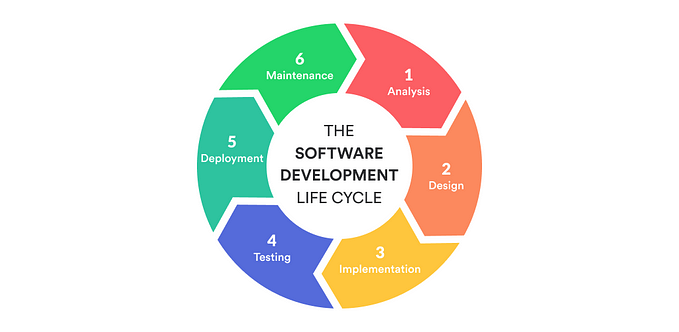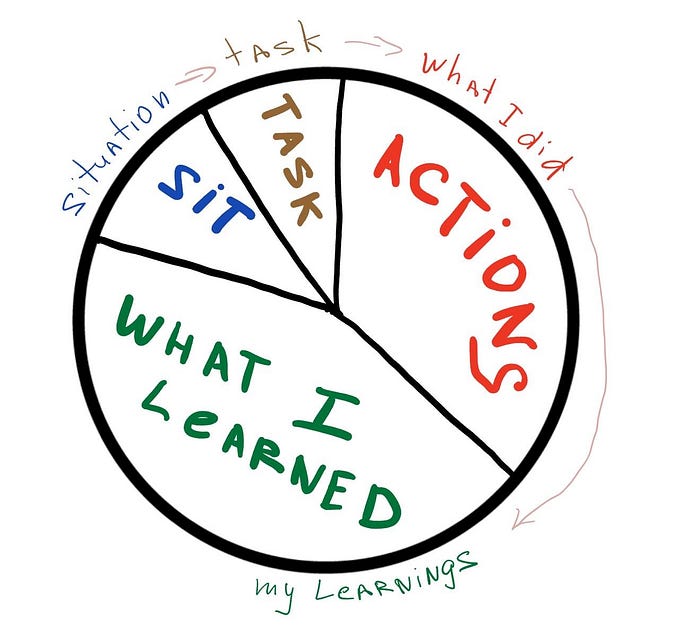Human-Computer Interaction — Principles, Evaluation and Universal Design Principle

Human computer interaction is focused on the user experience and user interface. Designing interactive computer systems to be effective, efficient, easy, and enjoyable is important. As it benefits the people who uses the interactive system. When designing interactive systems, there are some principles to be followed.
These principles help the designers to design a better application that is beneficial for the user. Also, there should be a universal design principle when it comes to designing a system. All these principles are briefly described in this article.
Design Rules for Interactive Systems

Principles of Learnability
Principles of learnability helps in understanding an interactive system initially by novice and then to attain the maximum level of performance. There are mainly five principles of learnability. They are predictability, synthesizability, familiarity, generalizability, and consistency. Principles of operation visibility, immediate/ eventual honesty, guessability and affordance are related to the above main five principles.
Principles of Flexibility
Principle of flexibility is the multiplicity of ways in which the end-user and the system exchange information. There are five principles that contribute the flexibility. They are dialog initiative, multi-threading, task migratability, substitutivity and customizability. Principles of system/ user pre-emptiveness, concurrent vs interleaving, multi-modality, representation multiplicity, equal opportunity, adaptivity and adaptability are related with the above main five principles.
Principles of Robustness
The robustness of the interaction between the user and the system covers features that support the successful achievement and assessment of the goals. There are mainly four principles that affect the robustness. They are observability, recoverability, responsiveness, and task conformance. Principles of browsability, static/ dynamic defaults, reachability, persistence, operation visibility, reachability, forward/ backward recovery, commensurate effort, stability, task completeness and task adequacy are related with the above main four principles.
Standards and Guidelines for Interactive Systems
In definition, standards for interactive system design are usually set by national or international bodies to ensure compliance with a set of design rules by a large community. They are a document of requirements, specifications, guidelines or characteristics regarding the fitness of the purpose of the materials, products, processes and services. A guideline is the rules about designing interactive systems. The basic categories of the Smith and Mosier guidelines are; data entry, data display, sequence control, user guidance, data transmission and data protection.
Shneiderman’s 8 Golden Rules
Shneiderman’s 8 golden rules of interface design provide a convenient and succinct summary of the key principles of interface design. The eight rules are: Strive for consistency in action sequences, layout, terminology, command use and so on.
- Enable frequent users to use shortcuts — such as abbreviations, special key sequences and macros, to perform regular, familiar actions more quickly.
- Offer informative feedback — for every user action, at a level appropriate to the magnitude of the action.
- Design dialogs to yield closure — so that the user knows when they have completed a task.
- Offer error prevention and simple error handling — so that, ideally, users are prevented from making mistakes and, if they do, they are offered clear and informative instructions to enable them to recover.
- Permit easy reversal of actions — to relieve anxiety and encourage exploration, since the user knows that he can always return to the previous state.
- Support internal locus of control — so that the user is in control of the system, which responds to his actions.
- Reduce short-term memory load — by keeping displays simple, consolidating multiple pages displays and providing time for learning action sequences.
Norman’s 7 Principles
Norman’s seven principles were introduced to transform difficult tasks into simple ones. The seven principles are as follows.
- Use both knowledge in the world and knowledge in the hand.
- Simplify the structure of tasks.
- Make things visible.
- Get the mappings right.
- Exploit the power on constraints.
- Design for error.
- When all else fails, standardize.
Evaluation techniques for interactive systems

What is evaluation?
Evaluation is testing done on the system to ensure the behavior of the system is as we expected and meet the user requirements. Evaluation should occur throughout the design life cycle and its results should feedback into the system to do modifications.
Goals of evaluation
There are three main goals in evaluation. They are To assess the extent and accessibility of the system’s functionality — The design of the system should enable users to perform their intended tasks more easily. To asses user’s experience of the interaction — considering aspects such as the system’s learnability, usability and user’s satisfaction with the system with the facts like enjoyment of the system. To identify any specific problems with the system — May be aspects of the design which, when used in their intended context, cause unexpected results or confusion amongst users.
Evaluation through expert analysis
The process which is done by designers or human factors experts to assess the design upholds accepted usability principles. There are mainly four approaches to expert analysis.
Cognitive walkthrough
Walkthroughs require a detailed review of a sequence of actions. Here one or more evaluators work through a series of tasks and ask a set of questions from the perspective of the user. This process requires a specification or prototype of the system, a description of the task the user is to perform, a complete written list of the actions needed to complete and an indication of who the users are.
Heuristic evaluation
Heuristic evaluation is that several evaluators independently critique a system to come up with potential usability problems. It is a guideline or general principle or rule of thumb that can guide a design decision or be used to critique a decision that has already been made. The Nielsen’s ten heuristics provides the most effective coverage of the most common usability problems. They are,
- Visibility of system status
- Match between system and the real-world
- User control and freedom
- Consistency and standards
- Error prevention
- Recognition rather than recall
- Flexibility and efficiency of use
- Aesthetic and minimalist design
- Help users recognize, diagnose and recover from errors
- Help and documentation
Model-based evaluation
Use of models is a third expert-based approach. Model based evaluation is combining cognitive and design models to evaluation process. Examples: GOMS model, keystroke-level model, design rationale, design models. Design methodologies like design rationale and also dialog models are also used in evaluation.
Using previous studies in evaluation
This approach is to use experimental results and empirical of previous experiments about human computer interaction. The reviewer must select previous results carefully which are related to current scenario.
Evaluation through user participation
User participation in evaluation occur in the later stages of development when there is at least a working prototype of the system in place. There are different approaches to evaluation through user participation like empirical or experimental methods, observational methods, methods that use physiological monitoring and query techniques.
Styles of evaluation
Evaluation can be done under two conditions as laboratory conditions and work environment in the field). Laboratory studies — Users are taken out from their normal work environment to a specialist usability laboratory to take part in controlled tests. Field studies — Take the designer or the evaluator out of their working environment to observe the system in action.
Empirical methods: experimental evaluation
Using a controlled environment is one of the most powerful methods of evaluating a design. First a hypothesis is chosen by the evaluator to test. Then some attributes of the participant behavior are measured to determine the hypothesis. There are number of factors that are important to the overall reliability of the experiment. They are participants, variables, hypotheses, experimental design and statistical measures.
Observational evaluation
Observing user interactions with the system is another popular way of gathering information about actual use of the system. There are techniques that is used to evaluate system by observing user behavior. They are, Think aloud and cooperative evaluation Protocol analysis Automatic protocol analysis tools Post-talk walkthroughs
Query techniques
Query techniques relies on asking the user about the interface directly. It is useful in eliciting detail of the user’s view of a system. This is more widely used in finding user requirements and tasks. There are two main types of query techniques used. They are interviews and questionnaires. Questioning has five types of styles as general, open — ended, scalar, multi-choice and ranked.
Evaluation through monitoring physiological responses
This overcomes the problems generated by relying on the observations and the user telling us what they are doing and how they are feeling. This uses objective usability testing known as the ways of monitoring physiological aspects of computer use. This shows the user’s actions clearly and helps in measuring how they feel. Eye tracking and physiological measurement are the two areas receiving the most attention to date. Eye tracking for usability evaluation has many possible measurements related usability evaluation such as number of fixations, fixation duration and scan path. Physiological measurements consider number of factors like heart activity, activity of the sweat glands, electrical activity in muscle and electrical activity in the brain.
Universal Design for Interactive Systems

Universal Design Principles
Universal design is the process of designing products so that it can be used by as many people as possible in many situations as possible. Practically it is impossible to provide an equivalent experience for all the users but the target of using universal principle is to provide an equivalent experience to the user. In 1997 the seven principles of universal design were developed by a group of architects, engineers, product designers and design researchers led by the late Ronald Mace in the North Carolina State University. The seven principles are equitable use, simple and intuitive to use, perceptible information, tolerance for error, low physical effort and size and space approach and use.
Multi-modal interaction
Providing access to information through more than one mode of interaction is an important principle of universal design. This type of designs relies on multi-modal interaction. Situation where the user is provided with multiple modes for interacting with the system falls here. A multi-modal interface acts as a facilitator via these models of interaction. Multi-modal interaction is for adaptive, cooperative, and flexible interaction among people.
Sound in the Interface
Sound plays a major role in usability. A more widespread effective use of sound would alleviate the problems faced by visual impaired people. Addition of audio confirmation of modes, in the form of changes in keyclicks, reduce errors. Speech and non-speech are the two types of sounds that can be used. Speech interface describes a software interface that employs either human speech or simulated human speech. Structure of speech, speech recognition, speech synthesis and uninterrupted speech are the factors that should be considered. A phonetic typewriter is the device which is to convert the human voice into typed letters. Auditory icons and ear cons are some main examples for non-speech sounds.
Touch in the Interface
Touch is the only sense that act as an input and an output. The use of touch in the interface is known as haptic interaction. This can be divided into two areas as cutaneous perception and kinesthetics. Touch interaction requires a touch-sensitive display, the direct contact of one or more fingers on the display and movement of the touch.
Handwriting recognition
Handwriting recognition is the ability to receive and interpret intelligible handwritten input from sources by the computer. The digitizing tablet is a major technology used in capturing handwriting. This is incorporating a thin screen on top to display the information, producing electronic paper. But this can make mistakes due to hand-busy, ink needs a conversion to character codes, finger-movement to write a character is complex and time consuming.
Gesture recognition
Gesture is a component of human-computer interaction that has become the subject of attention in multi-modal systems. The gesture is captured using computer vison or a special data glove. But this technology is much expensive, but it is useful in situations like there is no possibility of typing or other senses are fully occupied. Data glove gives highly accurate information but relatively intrusive technology.
Designing Interfaces for Diversity
Interfaces are usually designed for average users, but non average users are also should be considered. There are some factors that should be considered when comes to universal design. Some of these key areas are disability, age, and culture.
Disability
10% of the population in every country has a disability that affect interaction with computers. There are sensory, physical, and cognitive impairments. Visual impairment, hearing impairment, physical impairment, speech impairment, Dyslexia and Autism. A synthesized speech or braille output devices provide access to computers. Gesture recognition enables translating sign language. A predictive system like reactive keyboard is helpful for users with limited use of keyboards. Predictive algorithms that anticipate the words used and fill them in to reduce the amount of typing comes to speech impairment.
Age
Older people and children have specific needs when interacts with the interactive technology. The proportion of disability increases with age. Some older users are not familiar with the technology. And some are fear of learning. And terminology used in manuals are difficult for them to follow. So, the design must be clear and simple and forgiving errors. Children also have difficulties like the lack of vocabulary. And the requirement of a three-year-old is different from a twelve-year-old child. So, the interface should have multiple modes of input.
Culture
Language, cultural symbols, gestures and use of colors are some factors that should be considered when it comes to culture when practicing a universal design. Layout differs from the direction where the text is written in the design. Symbols like tick and cross carries different meanings in some cultures. And some symbols are religious. A one should have some knowledge about semiotics when comes to creating a universal design. Gestures and colors are also like that. They carry different meanings in different cultures.









